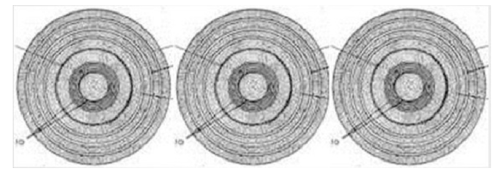By Samantha Polak, Editorial Intern
As retailers and consumers alike, we have all encountered those mysterious linear symbols located on the back of packages, products and tags as we browse through a retail store. If you’ve ever experienced a self-checkout counter, you know just how important (and tricky — my machines always seem to tell me to “scan again”) these seemingly random patterns are. But where would we be without the barcode? Today marks the 40th anniversary of the barcode, so here are some fun facts to celebrate the little lines that play such a pivotal role in shopping as we know it.
1. Although barcodes today are a staple in grocery stores, they were first implemented to label railroad cars.
2. The first barcode was patented in 1952 by Bernard Silver and Norman Joseph Woodland. However, instead of the linear symbology we have grown so accustomed to, the first patent was bulls eye shaped. 
3. The UPC, or Universal Product Code, does not actually contain the price of the product, but just a number that identifies the product.
4. Wrigley’s Juicy Fruit Gum was the first product scanned and sold with a barcode in 1974. A package currently is displayed at the Smithsonian in Washington DC.
5. UPC barcodes can only be read in one dimension. Therefore, only the width and spaces of the bars are important, while the height is inconsequential.
6. A controversy arose over whether the guard bars in UPCs were really just a hidden code of the 666 pattern associated with the devil. UPC developer, George J. Laurer, had to make an official statement that the symbols of the three guard bars being the number six were just a coincidence “like the fact that my first, middle and last name all have 6 letters.”

7. More than 100 bar code symbologies have been invented, but only half a dozen are in everyday use.
8. UPC barcodes consist of 12 numerical digits, with guard bars separating the two groups of six digits. These types of codes are widely used in countries including Australia, Canada, New Zealand, the U.S. and UK, and are used to track trade items in stores.
For almost half a century, these linear symbols have been aiding our shopping experience to make it quick and efficient. A product’s whole story lives in just those dozen numbers, and the barcode has been telling it with efficiency and simplicity for the past 40 years.
Happy anniversary, barcode! Today, I’ll be sure to browse my favorite store and scan something in your honor.






